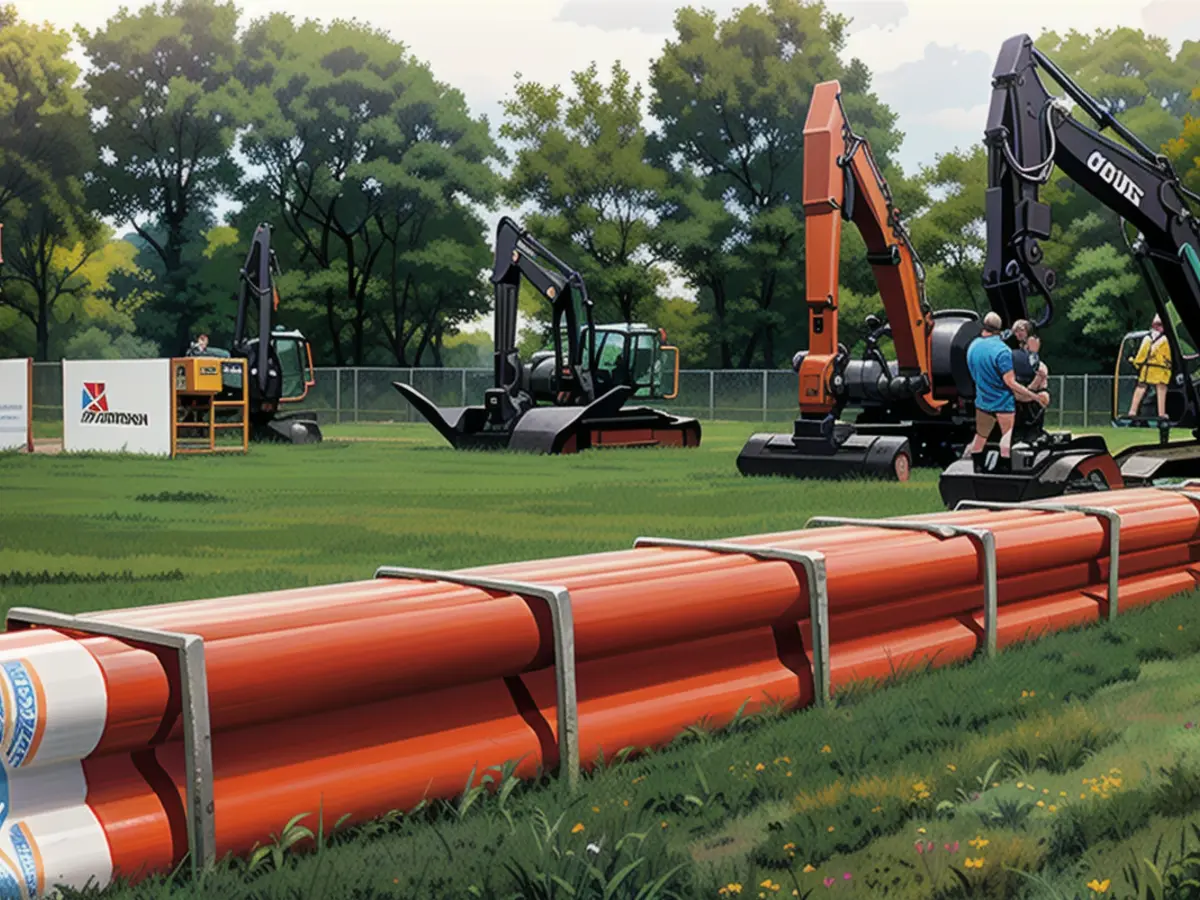Construction endeavor - Commencement of building the underground cable pathway from Emden to the Rhineland is imminent.
The decision on the planning application for a part of the upcoming direct current connection A-North, managed by Amprion, has been approved. This allows for work on the subterranean construction of this project to commence at the boundary of Emsland's Leer district, going up to the municipality border of Wietmarschen/Nordhorn (Grafschaft Bentheim). According to project manager Matthias Gierlich, this section, stretching over approximately 75 kilometers, might begin construction as soon as June.
This new 300-kilometer-long conveyor will bring up to two gigawatts of wind power from Emden, East Frisia to Meerbusch-Osterath in North Rhine-Westphalia in the future. It can satisfy the energy demands of nearly two million individuals and is deemed a crucial part of Germany's green energy infrastructure expansion.
Read also:
The planning approval decision for this infrastructure project, spanning from Emsland to Lower Saxony and continuing into the Rhineland, was made by authorities in Germany. This decision paves the way for Amprion GmbH to begin construction of the underground cable pathway, which will carry up to two gigawatts of electricity, primarily from renewable sources in Emden, towards Meppen and further to North Rhine-Westphalia.
The approval and commencement of this project align with Germany's economic policy, focusing on expanding its green energy infrastructure and reducing reliance on fossil fuels. With the help of this 300-kilometer-long electricity conveyor, nearly two million individuals in the area can expect to have their energy needs met.
Despite initial plans suggesting a possible start date in June, actual construction timelines for the approximately 75-kilometer stretch in Emsland may vary based on unforeseen factors. Amprion GmbH, the company responsible for managing this part of the A-North direct current connection, will have to carefully navigate issues related to project infrastructure and potential regulatory constraints.
As the construction of this underground cable pathway moves forward, communities in the Emsland, Lower Saxony, and Rhineland regions may find themselves impacted in various ways. While some areas may experience temporary disruptions or changes, overall, the project aims to contribute positively to the region's energy security and sustainability goals.
When the project is eventually completed, communities in Germany and the adjacent Rhineland region will significantly benefit from a more reliable and environmentally-friendly electricity supply. This direct current connection from Emden to Meerbusch-Osterath will serve as an example of international cooperation towards a more carbon-neutral future.
In some places near the construction sites, residents may notice empty spaces or changes to their surroundings as work on the project progresses. While these alterations may be temporary, the long-term benefits of expanding the green energy infrastructure across Germany and the Rhineland will likely make these adjustments worthwhile.








